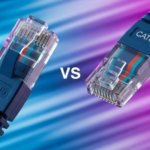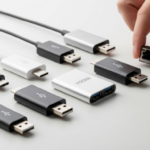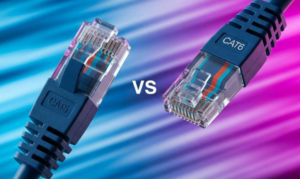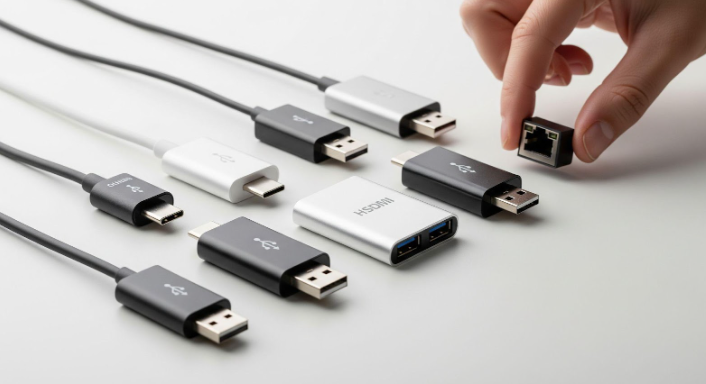It is significant to select a suitable cable. It has a big influence on your internet speed. An ill decision burdens your entire network. A lot of individuals make a comparison between CAT 5 and CAT 6 cable.
These are typical Ethernet connector cables in modern times. There are advantages and drawbacks to each. This guide tells it and tells it in simple words. This article will assist you in selecting the appropriate cable.
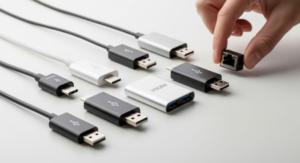
What Is an Ethernet Cable?
It networks the devices. Ethernet cables are cables that are used in transferring data using twisting wires. They are quicker and steadier on the internet. They are of various and varied speeds. Popular ones are CAT 5 and CAT 6.
What Is a CAT 5 Cable?
CAT 5 stands for Category 5 cable. It is an older Ethernet cable type. It supports speeds up to 100 Mbps. Bandwidth is limited to 100 MHz only. It uses twisted copper wire pairs inside. CAT 5 cable is cheap and reliable. It works well for small home networks. But it is now mostly outdated technology.
What Is a CAT 5 Ethernet Cable?
It is the same as CAT 5. People add “Ethernet” to specify its use. A CAT 5 Ethernet cable connects routers and devices. It is good for basic online tasks. But not ideal for gaming or streaming. It cannot support higher speed demands today.
What Is a CAT 6 Cable?
CAT 6 means Category 6 cable. It is newer than the CAT 5 cable. CAT 6 Ethernet cable supports faster speeds. It can reach up to 10 Gbps. Bandwidth goes up to 250 MHz. It reduces interference using better insulation. CAT 6 cable is ideal for heavy use.
What Is a CAT 6 Ethernet Cable?
It is used for modern network setups. CAT 6 Ethernet cable offers higher performance. It’s best for gaming, streaming, and business use. It supports faster file transfer and low lag. It can handle larger data loads easily.
Key Differences Between CAT 5 and CAT 6
Let’s break down the differences below:
1. Speed:
- CAT 5 offers only up to 100 Mbps.
- CAT 6 supports up to 10,000 Mbps.
That’s a major speed improvement.
2. Bandwidth:
- CAT 5 cable has a 100 MHz bandwidth.
- CAT 6 cable gives 250 MHz bandwidth.
This allows better data transfer capacity.
3. Distance:
- CAT 5 works up to 100 meters.
- CAT 6 works well for 55 meters.
After that, performance may drop slightly.
4. Shielding:
- CAT 5 usually has no shielding.
- CAT 6 often has improved shielding built in.
It reduces crosstalk and outside interference.
5. Price:
- CAT 5 cable is cheaper to buy.
- CAT 6 cable costs more per meter.
But it gives better long-term value.
6. Usage:
- CAT 5 is for simple home networks.
- CAT 6 is for offices and modern homes.
It handles multiple devices much better.
Benefits of CAT 5 Cable
CAT 5 Ethernet cable is still used. It is affordable and easy to find. Installation is simple for small setups. It supports light browsing and emails. It works with older routers easily. CAT 5 cable fits into tight budgets.
Limitations of CAT 5 Cable
It cannot handle modern speed demands. Large file transfers take much longer. Online gaming may lag with CAT 5. Video streaming might buffer or stop often. It lacks shielding, so interference is common. It is not future-ready for upgrades.
Benefits of CAT 6 Cable
CAT 6 Ethernet cable supports fast networks. It reduces lag in online activities.
It is perfect for smart home setups. You get a stable connection across devices. Better insulation gives less signal loss. It is reliable for office networks too.
Limitations of CAT 6 Cable
It costs more than CAT 5 cable. Installation may need care due to the thickness. Cables are less flexible in small spaces. For short usage, extra speed may go unused. Older routers may not support full speeds.
Which One Is Best for Home Use?
Take into consideration your needs in the usage of the internet. Modest activities such as browsing do not require a lot of speed. CAT 5 could be used in such a case. The better alternative is a CAT 6 Ethernet cable. It is compatible with online games and smart televisions.
Your network at home remains future-proofed and potent.
Which One Is Best for Office Use?
Offices use more internet than homes. They need fast and reliable connections. Many users share the same network there. CAT 5 cable won’t meet such needs. CAT 6 cable is ideal for offices. It handles multiple users and big files. VoIP and Zoom work better on CAT 6.
Gaming and Streaming: Which Is Better?
Online games need low latency always. Streaming needs a fast and stable connection, too. CAT 5 may lag during peak hours. CAT 6 always gives a smoother game experience. CAT 6 Ethernet cable is the clear winner. You enjoy 4K streaming without buffering issues.
File Transfer and Uploads
Large files move slowly on CAT 5. Uploads and downloads take more time. CAT 6 supports fast file transfers easily. Great for content creators and tech workers. You save hours on daily tasks.
Compatibility with Devices
Most routers support CAT 5 and CAT 6. Older devices may only support CAT 5. Newer routers run best with CAT 6. It is also backwards compatible with CAT 5. So you can upgrade without replacing everything.
CAT 5e: A Middle Option
CAT 5e is an improved CAT 5 cable. It supports up to 1 Gbps speed. It reduces crosstalk more than CAT 5. Cheaper than CAT 6 but faster than CAT 5. It’s good for medium-speed home networks.
CAT 6a: An Upgrade to CAT 6
CAT 6a is an advanced CAT 6. It supports 10 Gbps up to 100 meters. It offers double the bandwidth of CAT 6. It has stronger shielding and better insulation. But it’s more costly than regular CAT 6.
Lifespan of the Cables
CAT 5 may last 10 years or more. CAT 6 can last 15 years or longer. Better building gives it a longer life. Spending more now saves money later.
Future-Proofing Your Network
New devices need faster internet daily. CAT 6 supports growing digital needs easily. CAT 5 cable may limit future upgrades. For long-term plans, pick CAT 6 now.
Cat 5 vs Cat 6: Final Comparison Table:
| Feature | CAT 5 Cable | CAT 6 Cable |
| Max Speed | 100 Mbps | 10 Gbps |
| Bandwidth | 100 MHz | 250 MHz |
| Ideal For | Basic home use | Gaming, streaming |
| Cost | Lower | Slightly higher |
| Shielding | None | Yes |
| Future Ready | No | Yes |
| Max Distance | 100 meters | 55 meters (10 Gbps) |
Conclusion
The two cables are used for different ends. CAT 5 is acceptable for simple internet undertakings. It is gradually becoming obsolete in today’s world. CAT 6 Ethernet cable works with higher speeds. It is perfect to meet the needs of the majority of contemporary users.
CAT 6 is the best option to use when gaming, streaming and at work. You will have a smooth, easy and stable performance. CAT 6 will also be required in future upgrades. It is an intelligent decision in the home and office.
